| Address: | NW corner of 4th & Texas, Gate, Oklahoma | County: | Beaver |
| Started: | 1937 | Completed: | 1938 |
| NRHP: | Yes | NRHP Date: | Septemebr 10, 1999 |
| Agencies: | WPA |
Current Usage:
An extension of the Gateway to the Panhandle Museum
Description:
From the National Register of Historic Places Nomination Form:
“BACKGROUND
Gate, Oklahoma, is located 3 miles west of the 100th Meridian on U.S. Highway 64. Although a post office was recorded for the town of Gate as early as 1886, the town, as known, formally began in 1912. The town relied heavily on the surrounding agriculture community for its economic mainstay. Wheat was the main crop as individual farmers began to fence in the once open, free range. The Wichita Falls & Northwestern Railroad passed by the town in 1912, necessitating a move of the former townsite to the location of the tracks. The access to the railroad allowed the community to grow beyond its simple, clustered beginnings. The site was surveyed and platted and lots sold in early 1912 and the new town began to grow. The town continued to thrive during the 20’s with numerous businesses including a hardware store, drugstore, general merchandise store, barber shop, hotel, bank, two grain elevators, a telephone system, at least two cafes, a blacksmith shop, 2 auto agencies and a newspaper. Gate was incorporated in the 1940’s The old town of Gate was located across the section northeast and moved to the railroad at the present location in 1912. A wooden grade school building was built at that time. By 1917, a larger, two-story red brick building was constructed to serve the growing community. Consolidations took place in the following years, adding Wells, Pleasant Valley, Union Center, Prairie Dell, Zelma, Riverside or Berends, and the Glenwood school located north of the Cimarron River. The present Gate School building was created in 1937-38 when the Works Progress Administration remodeled the former two story building. In 1972 the high school classes were transferred to the Laverne School district and the grade school followed in 1992. The new gymnasium and lunch room were acquired by a Community organization. The school building was purchased by the Gateway to the Panhandle Museum.
HISTORIC SIGNIFICANCE
The “Great Depression” of the 1930’s devastated economic and social conditions nationwide. Oklahoma, heavily dependent on agriculture for economic survival, suffered bitterly through the decade-long depression. Particularly hard hit were Oklahoma’s more rural counties such as Beaver. The Panhandle counties of Oklahoma, Cimarron, Texas, and Beaver, were at the heart of the “Dust Bowl,” the drought-stricken plains of the prairie midwest. Reliant on the devastated industry of agriculture these counties lost residents at a tremendous rate. Those who stayed were frequently in need of local, state and national relief efforts to subsist. Gate was in the main part of the Dust Bowl of the 1930’s which devastated farming conditions. During the three year period of 1936 to 1938 alone, 500 to 600 hours of “sun-obscuring dust” ravaged the southern plains. This community had few tenant farmers but even the land owners abandoned or lost their farms during this period. The reduction in farm income left them little choice but to resort to the relief system or migration out of Oklahoma. In an effort to assist citizens in distress and stimulate the national economy, the administration of President Franklin Delano Roosevelt legislated twenty-nine different acts between 1933 and 1939. The bills were structured to sustain various parts of the economy. The majority of acts sought to provide some type of relief for the unemployed. Believing that “work rather than direct relief should be the keystone of Federal policy with respect to needy employables” the Emergency Relief Appropriation Act of 1935 authorized a program of federal relief employment. Using this act, Roosevelt created the Works Progress Administration (WPA) in May 1935 to provide jobs for the unemployed. In 1939, the Federal Works Agency incorporated the Works Progress Administration, renaming it the Works Projects Administration. The WPA continued in operation until 1943, at which time the economic stimulus provided by the war time industries lessened the need for the WPA and the federal monies allocated to the WPA were required elsewhere. The WPA, aimed specifically at employing the jobless on worthwhile public work projects, was particularly effective in aiding the economy. WPA projects, through the payment of wages and purchase of material, had the immediate effect of aiding destitute families, as well as bolstering the local, state and national economies through the latter half of the Great Depression. The WPA also contributed a major boost to Oklahoma’s educational and local government efforts. The buildings constructed by the WPA provided necessary, improved facilities for thousands of children and local governments. Although a federal work program, the WPA only facilitated public works projects nationwide. As part of its basic criteria, the WPA restricted construction projects to those that served a permanent and useful community function and had a “tax-supported public body” sponsor. The project sponsor provided partial monetary support, usually in the form of land and material, as well as engineering and architectural plans and specifications. Ownership of the project then belonged to the sponsor upon completion. Prominent among the construction projects was the erection of schools and education-related buildings. Schools easily fit the criteria as they provided expanded educational and social opportunities for the community for a limitless amount of time, as well as generally had the sponsorship of the district Board of Education or County Superintendent of Schools. The WPA’s participation in the construction of these school was critical. Without the economic assistance provided by the WPA, the majority of school districts could not raise the money necessary to build or remodel a building. By the mid-1930’s, most Oklahoma school districts were at the limit of their bonded indebtedness and the assessed values of their property had dropped due to the depression. As of April, 1937, 1/5 of all WPA schoolhouses built in the USA are located in Oklahoma. According to the “Dallas Farm News” in 1939, “The prairie, once home of the deer, buffalo, and antelope, is now the home of the Dust Bowl and the WPA.” The WPA was active in Beaver County from the beginning. A quarry was established in the center of the county that furnished building stone and aggregates for other WPA projects. There were park improvements in Beaver, the county seat. Curb and gutter and culvert construction projects improved roads and streets. But, the most far-reaching projects involving the WPA were the schoolhouses. In 1937, after two years of particularly dry weather and poor agricultural yields, the WPA released funds specifically aimed at rural school projects in Beaver County. A large number of small projects were scheduled for the numerous school districts. These projects ranged from simple repairs to the construction of privies to the erection of new buildings. The Gate School was targeted for one of the WPA funded projects. Because the WPA paid only for labor costs in order to maximize the relief benefit, many projects were creative in their use of materials. The Gate School made extensive use of salvaged materials from the original building. Labor was readily available; local farmers and ranchers were desperately in need of additional cash, and the thirty-four dollars per week that a man could earn on the WPA rolls went a long way to keeping families together and viable. Local men around the town of Gate were employed in the reconstruction of the Gate School. The roll of men working on the project varied. The WPA did not guarantee permanent work, only temporary work to supplement income. So, laborers came and went as needed, learning new skills that could lead to more permanent employment and supplementing the dwindling income from yet another bad harvest. It is unclear the total number of workers employed on the job. The foreman of the Gate School project was a local man named Alvin Means. He supervised the demolition of the second story of the original school and the construction of the new Gate School. Idle farm workers and townsmen were employed to do the labor, much of it without benefit of machinery. Using standardized plans created for the WPA by Walter Vahlberg and working under the tutelage of the head carpenter, D. Maphet, the building began to take shape in the spring of 1938; the demolition of the original building having started the previous fall. Clay tiles and face brick were brought in from elsewhere and the sand for the cement and mortar was obtained from a pit just west of the building. The building neared completion as the 1938-39 school year approached. The desks were moved in on September 2, in time for the beginning of the school year. The students who attended the Gate School during the reconstruction of their building were scattered all over town. The elementary students met at local churches while the high school classes met in local store buildings. Completion of the new building meant much to them, as well. The “Herald-Democrat” in Beaver quoted a senior in its September 15 edition: “We are proud of our new school building and as the first graduating class in the new building, we set our goals high and hope to reach them.” The fathers of a number of students were proud of the building as well; the money earned in its construction helped keep food on the table and a roof over their heads. While smaller WPA projects were undertaken in the Gate vicinity, it was the Gate School that was the centerpiece, the most important and lasting project.
The harvest of 1938 was good. The next year was better. Farm workers and ranchers returned to their traditional roles. In Gate, the men returned to the fields, but frequent visits to the Gate School to attend basketball games, plays, and community meetings reminded them that the building represented a bright spot in the darkest period of their lives. The Gate School stands as a prime example of what W.S. Key, WPA administrator, wrote in his report “Accomplishments: Works Progress Administration for Oklahoma” in 1937: “Buildings constructed under the Works Progress Administration in Oklahoma will stand for generations as symbolic monuments to a people that refused to be conquered by economic depression.” The Gate School remains as a visible reminder of the trying times of the “Dust Bowl” years. Its simple form and restrained style belie the importance of the building to the community. The creation of the building, the laying of each brick, brought dignity and pride to each man who partook of the endeavor, as well as putting food on the plates of his family. The Gate School is significant as the best local representative of the work of the WPA in eastern Beaver County, Oklahoma. “
Sources:
- National Register of Historic Places Form
- Oklahoma Landmarks Inventory Form #1
- Oklahoma Landmarks Inventory Form #2
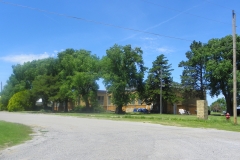
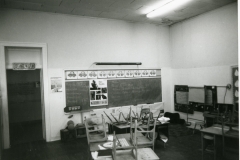
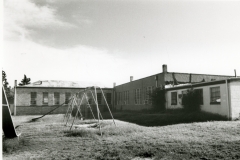
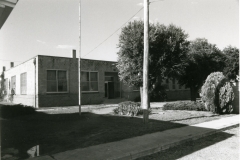
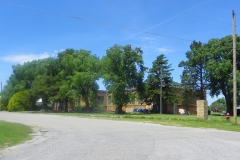
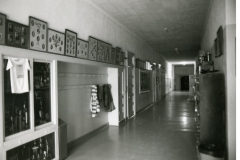



Leave a Reply